Reporting Change
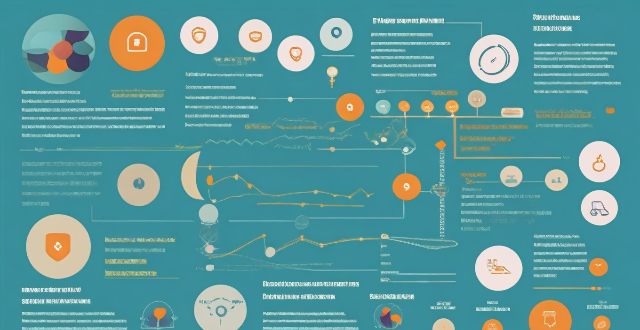
How does TCFD differ from other sustainability reporting frameworks ?
The Task Force on Climate-related Financial Disclosures (TCFD) is a unique sustainability reporting framework that focuses specifically on the financial risks and opportunities associated with climate change. It differs from other frameworks such as the Global Reporting Initiative (GRI) and the Sustainability Accounting Standards Board (SASB) in several key ways, including its exclusive focus on climate change, emphasis on financial implications, stakeholder engagement, specific recommendations for reporting, and integration with financial reporting. TCFD's approach helps companies effectively communicate their climate-related financial risks and opportunities, making it a valuable tool for navigating the complexities of climate change and its potential impact on their bottom line.
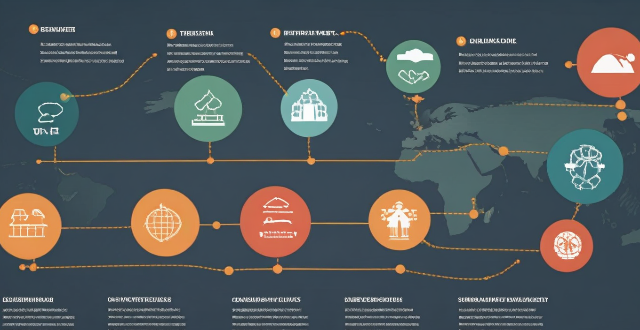
How does TCFD align with other global reporting initiatives like the Global Reporting Initiative (GRI) ?
The Task Force on Climate-related Financial Disclosures (TCFD) and the Global Reporting Initiative (GRI) are two global sustainability reporting frameworks that share several key points of alignment. Both provide guidelines for companies to report on their sustainability performance, with TCFD focusing specifically on climate-related financial disclosures and GRI covering a broader range of sustainability issues. They also emphasize the importance of materiality assessment, stakeholder engagement, risk management, and climate change disclosures in determining which aspects are most relevant to an organization's business model and strategy. By following both frameworks, companies can provide a more comprehensive picture of their sustainability performance and demonstrate their commitment to addressing climate change and other sustainability issues.

What are the most common ESG reporting frameworks used by companies ?
The Global Reporting Initiative (GRI) is a widely used sustainability reporting framework that provides a standardized approach for companies to report on their economic, environmental, and social performance. The GRI consists of several standards, including those related to disclosure principles, management approach, economic performance, environmental performance, social performance, governance, non-financial information disclosure, reporting principles, boundaries, guidelines, content, quality, frequency, language, format, timeframe, period, entities, scope, limitations, assurance, certification, training, tools, collaboration, innovation, stakeholder engagement, data quality, impact assessment, risk management, performance indicators, materiality analysis, and stakeholder engagement process. These standards help organizations prepare high-quality GRI reports that are accurate, reliable, and consistent across different organizations and sectors.

What ethical considerations should be taken into account when reporting on athletes' personal lives ?
The text discusses ethical considerations in reporting athletes' personal lives, emphasizing respect for privacy, accuracy and fairness, consent and participation, handling sensitive topics with care, public interest, age and maturity, cultural sensitivity, and aftermath support. It suggests that journalists should avoid intrusion, verify information, ask for permission, handle sensitive topics with care, consider age and maturity, recognize cultural differences, provide resources for support, and follow up responsibly. The text concludes that reporting on athletes' personal lives requires a nuanced approach that prioritizes ethics over sensationalism to maintain integrity while informing the public about the human aspects of sports figures they admire.

How does TCFD affect corporate reporting ?
The Task Force on Climate-related Financial Disclosures (TCFD) has significantly impacted corporate reporting by requiring enhanced disclosure of climate-related risks and opportunities. Companies must identify, assess, and manage these risks, including through scenario analysis and governance processes. They also need to disclose how climate change affects their business model and strategy, as well as the alignment of their portfolio with a low-carbon transition. Operational performance metrics such as emissions data and energy use must be reported, along with information on positive impacts and innovation related to climate action. Overall, the TCFD guidelines aim to promote transparency and encourage companies to integrate sustainability into their financial decision-making processes.

What role does media coverage play in shaping public opinion on climate skepticism ?
The text discusses the role of media coverage in shaping public opinion on climate change and climate skepticism. It highlights the influence of biased reporting, sensationalism, balanced coverage, source credibility, and audience perception on how individuals form their beliefs and attitudes towards these issues. The text emphasizes the importance of accurate, balanced, and transparent reporting by media outlets to ensure that the public is well-informed and able to make informed decisions based on evidence.

What is the status of climate finance commitments made during climate change negotiations ?
This text discusses the status of climate finance commitments made during climate change negotiations, highlighting their importance in mitigating and adapting to climate change. It outlines key points regarding financial commitments, progress towards targets, channels for finance, and the need for improved monitoring and reporting mechanisms. The text also explores the involvement of both the public and private sectors in climate finance, as well as the challenges and opportunities that exist in this area. Finally, it emphasizes the significance of increasing transparency, improving accountability, and exploring innovative financing solutions to ensure that these commitments result in meaningful actions to address climate change.

What role does technology play in improving environmental monitoring ?
Technology plays a pivotal role in enhancing environmental monitoring by enabling advanced data collection, analysis, visualization, reporting, and conservation efforts. Satellite imagery, drone surveillance, sensor networks, big data analytics, GIS, real-time reporting systems, and early warning technologies are among the key tools used. These advancements not only improve our understanding of environmental changes but also aid in managing resources and raising public awareness about ecological issues.

What are the key provisions of the latest climate change legislation ?
The latest climate change legislation is a comprehensive package of measures aimed at addressing the challenges posed by global warming and climate change. The key provisions include reduction of greenhouse gas emissions, adaptation to climate change impacts, international cooperation and leadership, just transition for workers and communities, and transparency and accountability.

What are some best practices for managing risk associated with climate change in a global supply chain ?
This article outlines best practices for managing risk associated with climate change in a global supply chain. It suggests assessing climate change risks by identifying potential impacts and evaluating vulnerabilities, developing a risk management plan that includes setting clear objectives and implementing mitigation measures, and monitoring and reviewing performance through tracking progress against objectives and continuously improving strategies. Key strategies include diversifying supplier networks, investing in resilient infrastructure, improving energy efficiency, enhancing supply chain transparency, promoting sustainable practices, establishing regular reporting processes, benchmarking against industry standards, soliciting stakeholder feedback, revising risk management plans regularly, participating in collaborative learning opportunities, and fostering a culture of innovation within the organization.

Can ESG principles help mitigate climate change ?
ESG principles, which stand for Environmental, SocialESG principles, which stand for Environmental, Social, have become increasingly important in These principles aim to encourage companies to operate in a more sustainable and socially responsible manner. In this context, it is worth exploring whether these principles can help mitigate climate change. The environmental aspect of ESG focuses on reducing the negative impact of business operations on the environment. This includes reducing greenhouse gas emissions, conserving natural resources, and minimizing waste generation. By promoting these practices, ESG principles can contribute to mitigating climate change in several ways: * Reducing Carbon Emissions: Companies that prioritize environmental sustainability are likely to reduce their carbon footprint by using renewable energy sources, improving energy efficiency, and investing in low-carbon technologies. This can help lower global greenhouse gas emissions, which are a major driver of climate change. * Conserving Natural Resources: By promoting sustainable resource management, ESG principles can help reduce deforestation, protect biodiversity, and conserve water resources. These actions can help maintain the health of ecosystems that play a crucial role in regulating the Earth's climate. * Minimizing Waste Generation: Encouraging companies to adopt circular economy models and reduce waste generation can help reduce the amount of greenhouse gases produced during waste disposal processes. Additionally, recycling and reusing materials can help conserve natural resources and reduce the need for new raw material extraction, further contributing to climate change mitigation. The social aspect of ESG focuses on promoting fair labor practices, human rights, and community involvement. While these principles may not directly address climate change, they can indirectly contribute to mitigating its effects by fostering a sense of corporate responsibility and encouraging companies to invest in their communities. This can lead to increased awareness and action around climate change issues, as well as support for policies and initiatives aimed at addressing the problem. The governance aspect of ESG emphasizes transparency, accountability, and ethical behavior within a company's management structure. By promoting good governance practices, ESG principles can help ensure that companies are held accountable for their environmental impact and are more likely to adopt sustainable business strategies. This can lead to increased transparency around carbon emissions reporting, better alignment between corporate goals and climate objectives, and improved stakeholder engagement on climate-related issues. In conclusion, ESG principles can certainly help mitigate climate change by promoting environmentally sustainable business practices, fostering a sense of corporate responsibility, and ensuring transparency and accountability within companies' management structures. However, it is important to note that these principles alone may not be sufficient to fully address the complex challenges posed by climate change. A comprehensive approach involving government policies, international cooperation, and individual actions will also be necessary to achieve meaningful progress in mitigating the effects of climate change.

How can international laws and treaties on children's rights be adapted to include protections against the impacts of climate change ?
Adapting international children's rights laws for climate change is crucial and can be achieved by recognizing the intersectionality of climate change and children's rights, strengthening legal frameworks, enhancing implementation and monitoring mechanisms, promoting education and awareness, advocating for child participation, and investing in research and data collection.

What are the best practices for businesses to report on their environmental impact as part of their CSR initiatives ?
Reporting on environmental impact is crucial for businesses as part of their CSR initiatives. Best practices include setting clear objectives and goals, collecting relevant data, analyzing environmental footprint, developing an action plan, communicating findings, encouraging stakeholder engagement, and continuously improving the reporting process. By following these steps, businesses can demonstrate their commitment to sustainability and transparency while providing valuable information to stakeholders about their environmental performance.

How can businesses measure and report their environmental performance throughout their supply chains ?
Measuring and reporting environmental performance in supply chains involves setting clear objectives, conducting a baseline assessment, developing an action plan, implementing and monitoring progress, and reporting performance transparently. Adopting standardized metrics, engaging stakeholders, and continuously improving are best practices to effectively manage environmental impact throughout the supply chain.

What role do carbon offsets play in a company's CSR approach to addressing climate change ?
**Summary:** The text discusses the role of carbon offsets in corporate social responsibility (CSR) strategies aimed at mitigating climate change. Carbon offsets, defined as investments in emission reduction projects that go beyond legal requirements, help companies counterbalance their operational emissions. Implementing carbon offsets can aid companies in achieving emission reduction targets, investing in sustainable projects, engaging stakeholders, managing risks related to environmental regulations, and fostering innovation. Key steps in implementing a carbon offsetting program include conducting an emission audit, selecting suitable offset projects, integrating offsets into the business model, ensuring transparency in reporting, and engaging stakeholders. By incorporating carbon offsets into their CSR strategies, companies can contribute to combating climate change while enhancing their reputation and potentially reaching new markets.

How does the European Union approach climate change through its legal frameworks ?
The European Union has been at the forefront of addressing climate change through its legal frameworks. It has adopted a comprehensive and integrated approach that includes legislation, regulations, directives, and other legal instruments to mitigate greenhouse gas emissions and adapt to the impacts of climate change. This approach is based on the principles of sustainable development, prevention, polluter pays, and subsidiarity. Some key legal frameworks for climate change in the EU include the European Climate Change Programme, Emissions Trading System, Renewable Energy Directive, Energy Efficiency Directive, and Climate Action and Resilience Package. The implementation and enforcement of these legal frameworks are ensured through monitoring and reporting, evaluation and review, and enforcement actions. Despite facing challenges such as political will, technological innovation, and international cooperation, there are also opportunities for the EU to further strengthen its approach to climate change through legal frameworks by exploring innovative financing mechanisms, collaborative governance, and global leadership.

What is the significance of greenhouse gas emissions targets in climate change negotiations ?
Greenhouse gas emissions targets are vital for climate change negotiations as they set clear goals, promote international cooperation, have economic implications, protect the environment, and ensure accountability. These targets help countries measure progress, hold each other accountable, and achieve necessary reductions to prevent catastrophic climate change.

What role does the United Nations play in global climate change negotiations ?
The United Nations plays a crucial role in global climate change negotiations by providing a platform for international cooperation and facilitating discussions among member states. The UN's involvement in climate change issues dates back to the 1970s, when it began organizing conferences and meetings to address the growing concern over the impact of human activities on the environment. The key functions of the United Nations in climate change negotiations include: 1. Providing a Forum for Dialogue and Cooperation: The UN serves as a neutral forum where countries can come together to discuss and negotiate solutions to climate change. Through its various bodies and agencies, such as the United Nations Framework Convention on Climate Change (UNFCCC), the UN creates an environment conducive to collaboration and consensus-building among nations with diverse interests and priorities. 2. Facilitating International Agreements and Treaties: The UNFCCC, established under the UN, is the primary international environmental treaty dedicated to combating climate change. It has facilitated the adoption of several key agreements, including the Kyoto Protocol and the Paris Agreement, which set out targets for reducing greenhouse gas emissions and adapting to the impacts of climate change. 3. Promoting Research and Information Sharing: The UN supports research into climate science and promotes the sharing of knowledge and best practices among countries. This includes initiatives like the Intergovernmental Panel on Climate Change (IPCC), which provides scientific assessments of climate change and its potential impacts, informing policy decisions at both national and international levels. 4. Supporting Adaptation and Mitigation Efforts: Recognizing that some regions are more vulnerable to the effects of climate change than others, the UN assists countries in developing adaptation strategies to cope with these challenges. Additionally, it supports mitigation efforts by encouraging the adoption of clean energy technologies and sustainable development practices. 5. Advocating for Climate Finance and Technology Transfer: The UN advocates for increased funding and investment in climate action, particularly for developing countries that lack the resources to implement effective climate policies. It also pushes for the transfer of environmentally sound technologies between developed and developing nations to help bridge the gap in technological capabilities. 6. Engaging Non-State Actors and Civil Society: Beyond state actors, the UN involves non-governmental organizations (NGOs), businesses, and civil society groups in climate change discussions. These stakeholders contribute valuable perspectives and expertise, enhancing the diversity of ideas and solutions brought to the table during negotiations. 7. Monitoring Progress and Holding States Accountable: The UNFCCC oversees the implementation of climate commitments made by countries through regular reporting and review processes. This ensures transparency and accountability in meeting agreed-upon targets, fostering trust among participating nations.

Can green bonds help fight climate change effectively ?
Green bonds, a type of fixed-income instrument, are issued to fund environmentally friendly projects that aim to reduce greenhouse gas emissions and promote sustainable development. They can effectively contribute to the fight against climate change by incentivizing renewable energy projects, supporting energy efficiency and conservation, investing in low-carbon infrastructure, promoting sustainable agriculture and forestry, and advancing research and development. However, challenges such as ensuring transparency and accountability, achieving scale and impact, integrating with broader climate strategies, and engaging diverse investors must be addressed to fully realize their potential. As the market for green bonds grows, they remain an important tool in combating climate change effectively.

What role do investors play in promoting sustainable development and combating climate change ?
Investors contribute to sustainable development and climate action by influencing corporate practices, funding eco-innovation, driving policy change, and integrating sustainability into investment criteria.
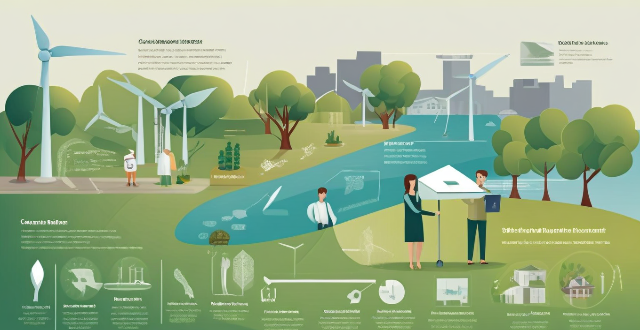
How do ESG (Environmental, Social, and Governance) criteria factor into investment strategies regarding climate change ?
ESG criteria are becoming increasingly important in investment strategies regarding climate change. Environmental criteria include renewable energy sources, emissions reduction, and sustainable sourcing. Social criteria include workforce development, community engagement, and human rights. Governance criteria include board diversity, transparency and accountability, and long-term planning. By prioritizing these criteria, investors can help drive positive change while mitigating financial risks associated with climate change.
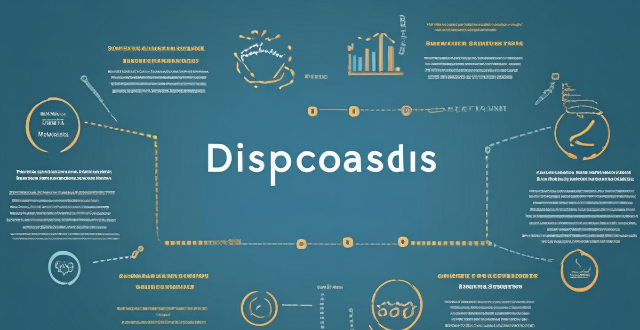
What international agreements have been made to address climate change ?
The text discusses the importance of international agreements in addressing climate change, which is a global issue. These agreements include the United Nations Framework Convention on Climate Change (UNFCCC), the Kyoto Protocol, the Paris Agreement, and the Montreal Protocol on Substances that Deplete the Ozone Layer. The UNFCCC provides a framework for negotiating specific climate change agreements, recognizing that developed countries should take the lead in combating climate change. The Kyoto Protocol sets binding targets for industrialized countries to reduce their greenhouse gas emissions. The Paris Agreement aims to strengthen the global response to climate change by keeping the increase in global temperatures well below 2 degrees Celsius above pre-industrial levels. The Montreal Protocol on Substances that Deplete the Ozone Layer has had significant positive impacts on climate change mitigation as well.

What is the Paris Agreement and how does it address climate change ?
The Paris Agreement is a global climate change agreement adopted by 196 parties at the United Nations Framework Convention on Climate Change (UNFCCC) Conference of the Parties (COP 21) in Paris, France, on December 12, 2015. It aims to limit global warming to well below 2 degrees Celsius above pre-industrial levels and pursue efforts to limit the temperature increase to 1.5 degrees Celsius. The agreement also seeks to strengthen the ability of countries to deal with the impacts of climate change. To achieve its goals, the Paris Agreement addresses climate change through mitigation, adaptation, finance, and transparency and accountability measures. Mitigation refers to actions taken to reduce or avoid greenhouse gas emissions, such as increasing renewable energy use, improving energy efficiency, preserving forests, and implementing carbon pricing policies. Adaptation involves adjustments in natural or human systems in response to actual or expected climate stimuli or their effects, such as infrastructure development, water management, health systems, and agriculture practices. Finance acknowledges the need for financial support from developed countries to help developing countries implement their climate actions through mechanisms like the Green Climate Fund and international cooperation. Transparency and accountability are ensured through regular reporting on national determined contributions (NDCs), a global stocktake process every five years, and an expert review process to assess the quality and accuracy of countries' reports on their greenhouse gas emissions and implementation of their NDCs.

What are the main goals of the Glasgow Climate Pact ?
The Glasgow Climate Pact, adopted at the 26th United Nations Climate Change Conference (COP26) in November 2021, aims to combat climate change by keeping global temperature rise below 2 degrees Celsius and striving to limit it to 1.5 degrees Celsius. The main goals of the pact are urgent action on climate change, strengthening global cooperation, providing adequate finance for climate action, balancing mitigation and adaptation efforts, and ensuring transparency and accountability in climate action. Countries must take immediate steps to reduce greenhouse gas emissions, invest in adaptation measures, work together to develop effective climate policies, mobilize resources from public and private sectors, strike a balance between mitigation and adaptation efforts, and establish clear reporting mechanisms and monitoring systems to track progress towards achieving climate goals.

What is the Paris Agreement and how has it impacted international climate change negotiations ?
The Paris Agreement, adopted in 2015, is a significant milestone in the global fight against climate change. It has achieved near-universal participation with 196 parties signing onto the agreement, demonstrating a strong consensus on the need to address this issue. The agreement sets long-term goals to limit global warming and strengthen countries' ability to deal with its impacts. Key aspects of the Paris Agreement's impact on international climate negotiations include: 1. **Universal Participation**: Achieving near-universal participation, highlighting a global consensus on tackling climate change. 2. **Long-term Goals**: Setting clear long-term goals, providing direction for countries' policies. 3. **Nationally Determined Contributions (NDCs)**: Allowing countries to set their own targets based on capabilities while contributing to the overall goal. 4. **Regular Updates and Review Mechanism**: Ensuring continuous progress by requiring countries to regularly update and review their commitments. 5. **Loss and Damage**: Recognizing the need for financial resources to help developing countries cope with climate-induced loss and damage. 6. **Transparency and Accountability**: Building trust through regular reporting on emissions, implementation efforts, and support. 7. **Enhanced Cooperation and Support**: Emphasizing cooperation and support between developed and developing nations. 8. **Flexibility and Differentiation**: Recognizing differing responsibilities and capabilities, ensuring broad participation. Overall, the Paris Agreement has significantly impacted international climate change negotiations by setting clear goals, promoting universal participation, fostering cooperation, and establishing mechanisms for transparency and accountability.

How can insurers adapt to climate change and its impacts on their business ?
Insurers must adapt proactively to mitigate potential losses and maintain their business sustainability, including understanding climate change risks, innovating products and services, adjusting pricing and underwriting strategies, managing risks effectively, establishing governance and transparency, and fostering collaboration and partnerships.

What are the main objectives of climate change negotiations ?
Climate change negotiations aim to limit global warming, pursue a 1.5°C target, adapt to impacts, support developing countries, and ensure transparency and accountability in actions.

How do investors evaluate a company's CSR performance related to climate change when making investment decisions ?
When making investment decisions, investors consider a company'When making investment decisions, investors consider a company' Responsibility (C investors consider a company's Corporate Social Responsibility (CSR) performance related to climate change. The article discusses how investors evaluate a company's CSR performance related to climate change when making investment decisions. The first step in evaluating a company's CSR performance related to climate change is to assess its environmental impact. Investors look at the company's carbon footprint, energy consumption, waste management practices, and other environmental metrics to determine its impact on the environment. Companies with lower carbon emissions and better waste management practices are considered more sustainable and attractive to investors. Investors also evaluate a company's sustainability reporting practices. Companies that provide detailed reports on their environmental impact, social responsibility initiatives, and governance practices are seen as more transparent and accountable. Another important factor that investors consider is a company's use of renewable energy sources. Companies that rely heavily on fossil fuels for their operations are considered less sustainable than those that use renewable energy sources such as solar or wind power. Carbon offsetting programs are another way that companies can demonstrate their commitment to reducing their carbon footprint. Finally, investors evaluate a company's stakeholder engagement practices related to climate change.
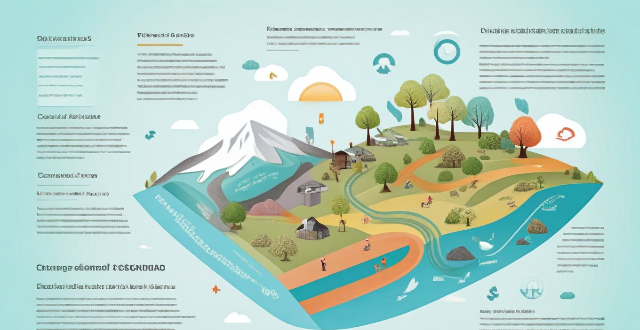
How does climate change affect education ?
Climate change impacts education through extreme weather events, health issues, food insecurity, economic challenges, social changes, and environmental degradation. These effects necessitate collaboration between educators and policymakers to develop resilient strategies for adapting to climate change.

How does climate change legislation influence corporate sustainability practices ?
Climate change legislation significantly influences corporate sustainability practices by setting standards for environmental responsibility. It compels companies to report on their environmental impact, use market-based mechanisms like cap-and-trade systems, and consider tax incentives or penalties in their operations. This legislation also creates investor pressure through ESG criteria and shareholder resolutions, leading companies to enhance their sustainability practices to meet investor expectations. Additionally, it opens market opportunities for green products and services and encourages renewable energy adoption. Companies that comply with climate legislation can improve their brand image and stakeholder engagement. Furthermore, such legislation aids in risk management by requiring companies to assess physical and transition risks associated with climate change. Overall, climate change legislation is a driving force behind corporations adopting more sustainable practices.